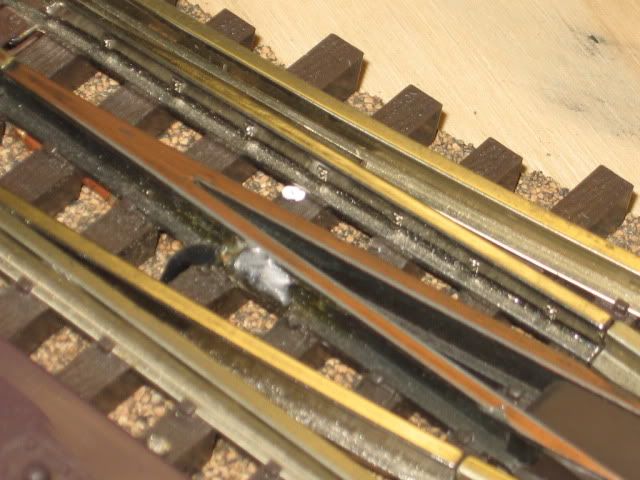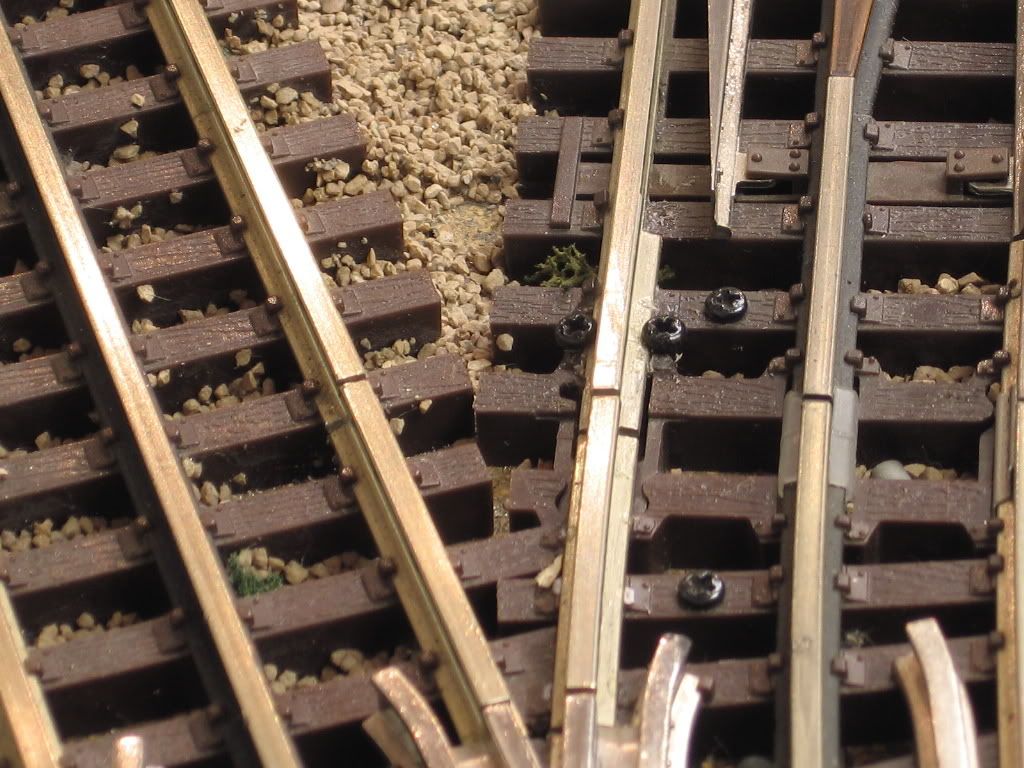I have just had an Atlas O 054 left-hand switch fail. It's not the electro magnet (switch machine) but the underside embedded wiring that transfers power on down the track. They seem to fatigue over time and break. The worst part it is in a blocked switching yard area meaning a lot of track has to be lifted. Has anyone had much luck powering the dead track with another set of power shoes and leaving the broken Atlas O switch in place? OR do I just bite the bullet and find another Atlas O 054 left-hand and replace it? Finally, have any of you experienced the same problem of broken wires underneath the switch in the area of the frogs?















